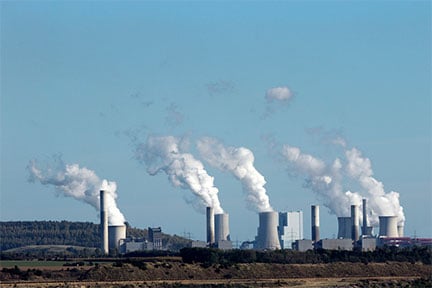What is synthetic gypsum? While natural gypsum has been mined and manufactured for centuries, the process of manufacturing synthetic gypsum has only been available for the last few decades. In case you’re not familiar with synthetic gypsum’s characteristics and uses, read on to learn the basics about this incredible product.
1. Synthetic Gypsum is a Unique By-Product
Synthetic gypsum is created as a by-product of industrial processing. It is composed of calcium sulfate dihydrate, has the same characteristics as natural gypsum, and is a high-quality and environmentally friendly product.
2. Synthetic Gypsum Comes in Many Forms
Synthetic gypsum is the name used to classify a variety of gypsum by-products. The most common gypsum by-product is FGD gypsum. When referencing synthetic gypsum, most people are likely referring to FGD gypsum. However, there are small quantities of synthetic gypsum created through various acid-neutralizing industrial processes. These additional types of synthetic gypsums include:
- Citrogypsum, a by-product of citric acid manufacturing
- Fluorogypsum, a by-product of hydrofluoric acid manufacturing
- Phosphogypsum, a by-product of phosphoric acid manufacturing
- Titanogypsum, a by-product of titanium dioxide manufacturing.
3. FGD Gypsum is Created at Power Plants
FGD gypsum is formed when fossil-fueled power plants utilize flue gas desulfurization systems to remove sulfur dioxide from gas pollutants. Using a process referred to as ‘scrubbing,’ gas pollutants are fed through calcium carbonate to eliminate impurities and environmental concerns. When the sulfur dioxide is removed, the gypsum by-product is formed.
4. Common Uses for Synthetic Gypsum
Synthetic gypsum is used interchangeably with natural gypsum in a number of applications. Examples of products that utilize synthetic gypsum include:
- Cement
- Drywall
- Glass Manufacturing
- Plaster
- Soil Amendments
5. Benefits to Using Synthetic Gypsum
Manufacturing synthetic gypsum creates many positive economic and environmental benefits. Economically, manufacturing synthetic gypsum creates revenue from a product that otherwise incurred waste management costs. And by creating a valuable product from waste, material is kept out of landfills and environmental pollution is reduced. Furthermore, increased use of synthetic gypsum conserves natural gypsum and reduces the need to mine resources. Synthetic gypsum products even have benefits over natural gypsum products in terms of costs and environmental impacts.
6. Gypsum is ‘Green’
In addition to the infrequent occurrence of tinted green natural gypsum, all gypsum products (natural and synthetic) are also figuratively considered ‘green’ in terms of their recycling capabilities. This is due to the fact that gypsum is eternally recyclable, a major advantage when manufacturing gypsum into a commercial product. Gypsum is also a rare example of closed loop recycling, i.e. the ability to use product waste to make the same product over and over.
FEECO is highly experienced in processing gypsum, both natural and synthetic forms. For more information, contact FEECO today!


